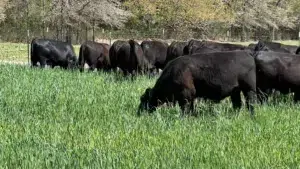It was around 15 years ago that the 4010 forage field pea variety hit the market. At the time it was a very innovative variety, offering high bio-mass in a forage field pea with good agronomics.
But because it’s getting so old and no certified seed production of this variety takes place, the return on that variety is basically zero for us. We’re no longer getting a return on our investment, which means it’s difficult to bring new and better varieties to market. We must invest in new genetics, bringing to market varieties that give producers higher value. But how do we do this when we have no way to recoup the money we’ve spent on developing those older varieties?
In other words, we’re looking to increase our investment in modern plant breeding. It takes up to 10 years to bring a new forage pea variety to market. That’s a lot of time, people power, research and dollars. Other parts of the world have developed systems that allow public or private breeders and seed companies to protect innovation through funding development of new varieties, allowing a return on investment while delivering solid value to producers at the same time. We need the same ability for plant breeders in Canada.
Ratifying UPOV 91 several years ago was a huge step forward for us as a country. It allows plant breeders in Canada to protect their rights in ways they couldn’t before, so they can be properly rewarded for their hard work. When breeders benefit in this way, so do seed companies and producers.
Since I began my career at DL Seeds a dozen years ago, our return on investment has been negative in field pea development in Canada. We do better business in the field pea arena in the United States, as their pea development model is different than in Canada. They have more of a contract system that allows breeders to better protect their intellectual property, which results in higher certified seed use in the U.S. compared to Canada.
We are primarily a canola breeding company. We have 30 full-time staff working on canola breeding for North America. We have zero full-time staff working on peas, only staff working part time on field peas. Right now, the rate of return in forage field pea is so small that we are unable to significantly grow this side of our business — unless we can develop a model that allows us to recoup the investments we make to bring new varieties to market.
The Seed Variety Use Agreement (SVUA) pilot program is one possible way to accomplish this. We recently announced the inclusion of two new forage field pea varieties we are hoping will gain traction among growers and allow us to fund the development of more such varieties. Preliminary discussions around the pilot program, first announced in February, are promising.
Seed companies choosing to sell these varieties will be targeting customers who see value in investing in plant breeding and getting new varieties into the marketplace. This can only help further the discussion around the need for more investment in variety development.
I also hope our participation in an effort like the SVUA pilot program marks the beginning of a forage field pea breeding investment renaissance in Canada for us. Many other crops can use this kind of influx of enthusiasm and, most important of all, investment.













